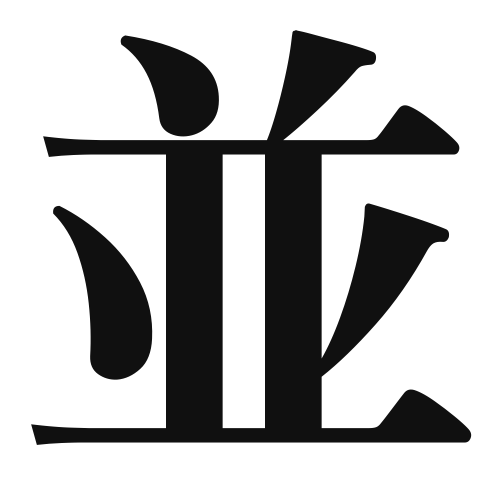1. Overview of Meaning
The kanji “並” (nami) primarily means “to line up,” “to be equal,” or “to be in a row.” It conveys the idea of things being arranged in a sequence or being on the same level.
2. Formation and Radical
Formation of the Kanji: The kanji “並” is a compound character (会意文字) that combines elements to convey its meaning. It consists of the radical “並” which suggests the idea of alignment or equality.
Radical: The radical for “並” is “並” itself, which is used to indicate concepts related to arrangement and equality.
3. Examples of Usage
Common Words and Phrases: Some frequently used words that include “並” are:
- 並ぶ (naru) – to line up
- 並べる (naraberu) – to arrange
- 並行 (へいこう, heikou) – parallel
Example Sentences in Daily Conversation:
- 人々はバス停で並んでいます。 (Hitobito wa basutei de nandeimasu.) – People are lining up at the bus stop.
- 本を並べるのが好きです。 (Hon o naraberu no ga suki desu.) – I like to arrange books.
4. Synonyms and Antonyms
Similar Kanji: A kanji with a similar meaning is “等” (nado), which also conveys the idea of equality or being on the same level, but is often used in a more abstract sense.
Antonyms: A kanji with an opposite meaning is “異” (i), which means “different” or “unlike,” indicating a lack of equality or alignment.
5. Cultural and Historical Background
Relation to Japanese Culture: The concept of “並” is significant in Japanese culture, where harmony and order are highly valued. The idea of things being in line or equal reflects social norms and practices.
Proverbs and Idioms: One common expression is “並の人” (nami no hito), which refers to an average person, emphasizing the idea of being equal or ordinary.
